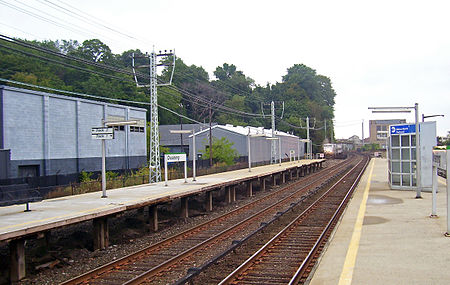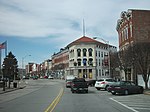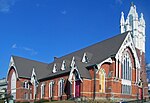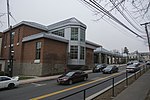Ossining station

Ossining station is a commuter rail stop on the Metro-North Railroad's Hudson Line, located in Ossining, New York. It is one of two express stations on that line south of Croton–Harmon, along with Tarrytown, that serve most trains, excluding peak hour trains to/from Poughkeepsie. Trains leave for New York City every 25 to 30 minutes. It is 30.1 miles (48.4 km) from Grand Central Terminal and travel time to Grand Central is about 48 minutes. Near the station is a ferry dock which is used by the NY Waterway-operated ferry connection to Haverstraw, allowing Rockland County, New York commuters to use the Hudson Line as an alternative to the New Jersey Transit-operated lines across the Hudson River. Just south of the station is a section of track which runs through the middle of Sing Sing Correctional Facility.
Excerpt from the Wikipedia article Ossining station (License: CC BY-SA 3.0, Authors, Images).Ossining station
Main Street,
Geographical coordinates (GPS) Address Nearby Places Show on map
Geographical coordinates (GPS)
| Latitude | Longitude |
|---|---|
| N 41.157519444444 ° | E -73.869138888889 ° |
Address
Ossining
Main Street 1
10562
New York, United States
Open on Google Maps








